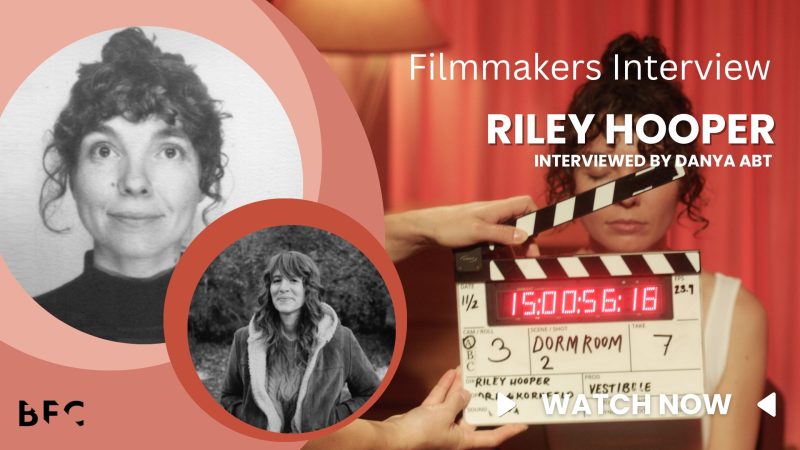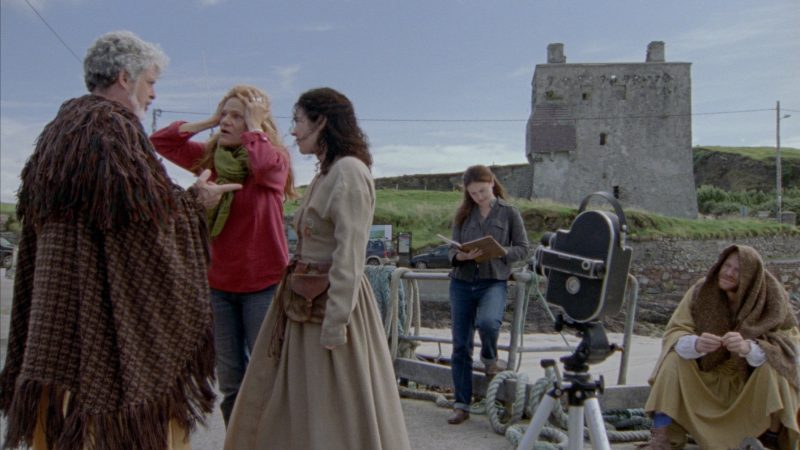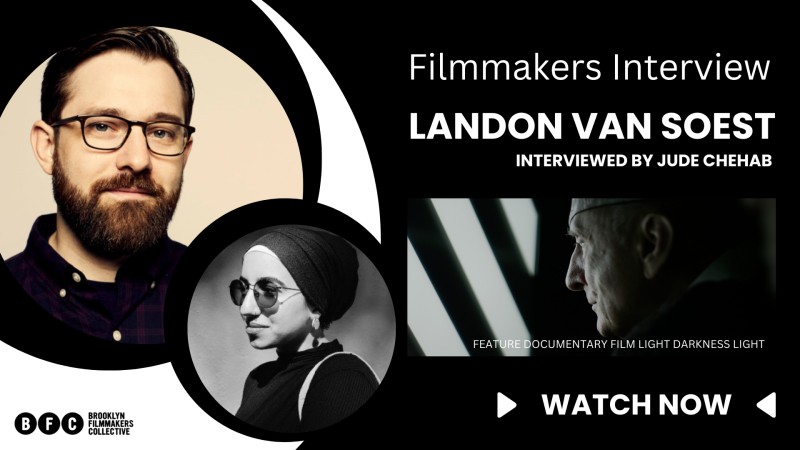Interviewed and edited by Tian
August 2024
“It is a Soul: A Portrait of Hailu Mergia” is a 14-minute atmospheric documentary short film that delves into the life and music of Ethio-jazz legend Hailu Mergia. The film tracks aspects of his journey from leading Addis Ababa’s vibrant 1970s club scene, through his immigration to the United States amidst Ethiopia’s political turmoil, to his inspiring return to music performance in 2014 when a New York-based music publisher began re-releasing his work.
Directed by Brooklyn Filmmakers Collective members Adam Golfer and Lorena Alvarado, “It is a Soul” is a labor of love born from a deep appreciation of music and a testament to creative collaboration and friendship. Now streaming on the BFC Channel, we reached out to Adam and Lorena to discuss the making of the film, their unique creative process, and the enduring influence of Ethio-jazz music.
FEATURING FILMMAKERS
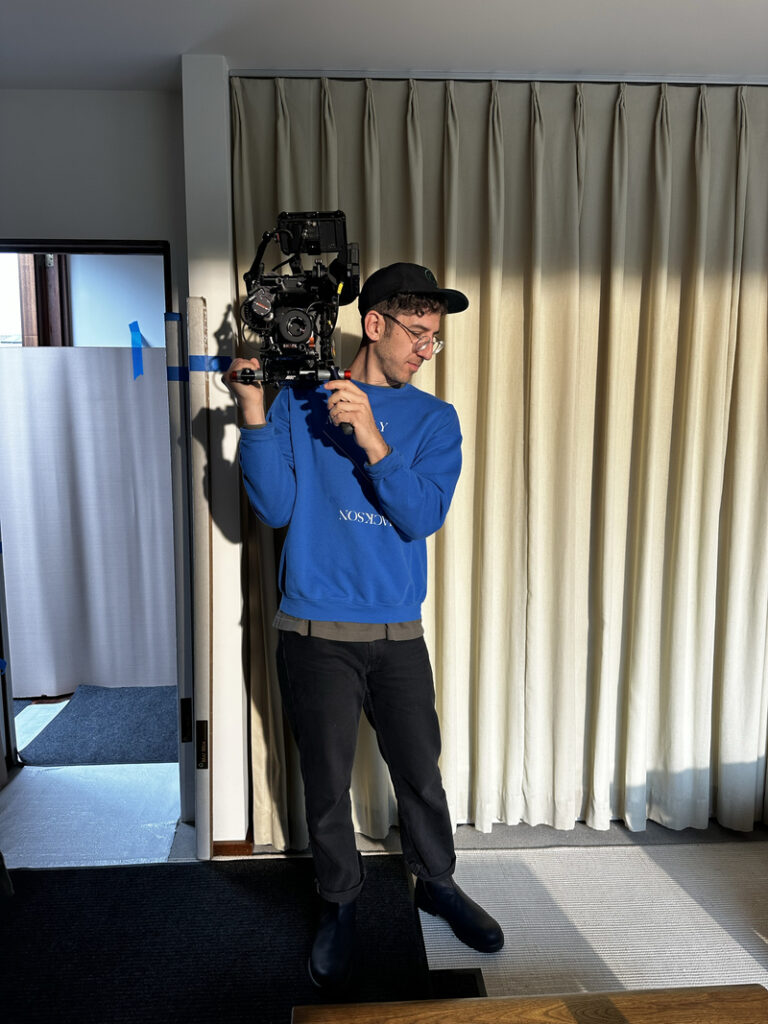
Adam Golfer
Director / Cinematographer
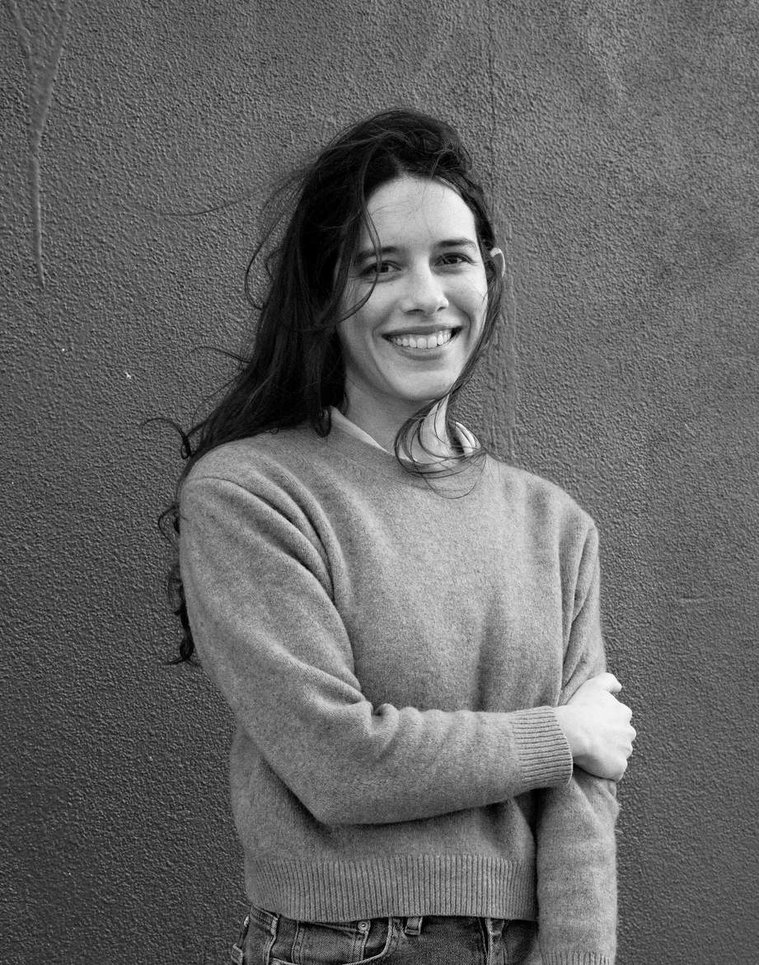
Lorena Alvarado
Director / Editor
BFC Channel: Tell us a little about yourself. How did you get into filmmaking?
Adam: I was always interested in films, but I studied photography and sort of got into film through the side door. I made books and maintained a studio practice of personal work, and worked as a freelance photographer in NY, shooting editorial assignments for magazines and newspapers to support myself. I went to Hunter College for my MFA, and began experimenting with short hybrid docs, and graduated with 2 short films under my belt. I was really fascinated by the process of filmmaking – shooting felt really exciting because it was adjacent to the way I was taking photographs. And editing was a new world that felt full of possibilities to try things. I didn’t learn filmmaking traditionally so I didn’t really know the rules and I think that was very exciting when I started. There was no right way to do things. When I finished at Hunter, I was hungry to work on film projects, and told magazines that I worked for that I was making video as well. Slowly I began to get small commissions as a director/dp/editor combination, very much in a documentary tradition. And then this work helped me get fashion and commercial jobs as a cinematographer.
Lorena: I always knew I wanted to do something related to film, but for a long time it felt completely unattainable and impossible. After college I moved to Los Angeles and although I realized it wasn’t the place for me, I collaborated with a lot of friends on music videos and short films for fun. Afterwards when I moved to New York I was also trying to emulate that collaborative model of making art projects with friends. When I met Adam through BFC in 2018 and I felt an immediate creative kinship. We barely knew each other but he agreed to shoot a small short film commision I received. It was such a fun and fulfilling experience that we’ve tried to work with each other as much as possible ever since.
What kind of projects do you work on professionally these days?
Adam: I work on commission as a cinematographer for fashion and commercial brands, mostly creating short form 15 sec to 2 min films. Often I work on photography sets, and collaborate with a photographer/director on the motion component. I also direct short form documentary projects, and Lorena and I have collaborated on and co-directed a number of artist profile films for Art21. Lorena and I are good friends and have a really fluid working relationship. Sometimes we direct together. Sometimes she directs and I do the camera work. Other times she edits, but we are both really involved with all steps of the process. I feel really lucky to have a friend that I trust so deeply to collaborate with. We intuitively see things in a complementary way.

It is a Soul is a beautiful visual piece with a nostalgic soundtrack. How did you connect with Ethio-Jazz Legend Hailu Mergia?
Adam: In 2018 I made a quest to get in touch with him – I’d been following Awesome Tapes from Africa for years when it was an mp3 blog in the early 2000s, years before it became Hailu’s record label. I wanted to get in touch with Hailu directly. He’s an older guy, so I thought maybe a phone call was the best way. I did a lot of digging and found a phone number online in a public directory. When I called it, Hailu answered !
I told him I was a massive fan, and that I grew up outside of DC, near where he lived. He was really receptive, and invited me to come to a show happening around then in Brooklyn. We met afterward, and he was super warm and gracious. We got a coffee the next morning and he invited me to come down to DC to hang out a bit.
How did the project come together?
Adam: Lorena and I had been talking about collaborating so when I told her about all of it she was super excited and game to jump in. It was definitely a learning curve. We didn’t really know what we were looking for, other than a feeling. We wanted to make a film that felt like his music, rather than a biographical explanation of it. The project had zero budget, but I have old friends in DC and my mom lives there, so I knew I’d have free places to stay when we went down.
The first trip we took was 3 days, we both slept on friends’ couches, and after working with the footage for months, decided to scrap most of it. It didn’t feel right. We thought that the interview would be much better if Hailu was speaking Amharic, his native language. Both of us are huge fans of Jessica Beshir, and she is a friend from BFC, so we asked her if she’d come on as a producer. Jess is Mexican-Ethiopian, speaks Amharic and is also a massive fan of Hailu and Ethio-Jazz. We thought she could help us get Hailu to open up a bit more. Lorena and I directed together, I did the camera work and Lorena, Jess and I did interviews with Hailu at his home.
That second trip felt much more honest, and really gave us some momentum. We kept filming in small spurts for the following year, until Covid threw a wrench in the project. We had wanted to continue filming. But in the end we decided to make it short and sweet, by necessity.

Can you tell us more about Ethiopian Jazz and Hailu Mergia’s journey? How did he end up living in Washington, D.C.?
Adam: In Amharic, the word “tezeta,” has 3 meanings. It describes the concept of, “…memory, or the memory of loss and longing.” The term is also the name of a musical scale in traditional Ethiopian music, and, simultaneously, the name of an Amharic folk standard or ballad, which evokes a feeling of loss.
At the height of the second wave of the vibrant Ethiopian jazz music scene, Hailu Mergia was a famous and beloved multi-instrumentalist and bandleader in Addis Ababa, performing with the Walias Band, the Dahlak Band and others. The Walias had a residency at the famed Hilton Hotel in Addis, where all of the biggest acts of the time performed until dawn, sometimes playing 8-10 hour sets for ecstatic crowds of dancers.
In 1977, Mengistu Haile Mariam and the Derg seized power in Ethiopia, establishing a murderous and oppressive regime that crushed all political opposition during the period known as the Red Terror. Amidst this turmoil, Hailu Mergia and the Walias Band rose to prominence, becoming one of the most popular bands in the country with their performances in Addis Ababa. Their fame earned them a rare opportunity in 1981: permission to tour the United States.
During the tour, Hailu Mergia and three of his bandmates decided not to return to the dictatorship in Ethiopia. Instead, they sought asylum in the US, leaving behind their successful careers in Addis Ababa to start new lives. Hailu settled in Washington, DC, where his music was largely unknown outside the small Ethiopian diaspora community.

Settling in Washington, Hailu continued to make music for himself for over 30 years while driving a taxi, working at a gas station, managing a club and doing whatever he had to in order to make a living. In 2014, Brian Shimkovitz– a young music publisher from Brooklyn – discovered Hailu’s music in a cassette shop in Addis Ababa. He tracked Hailu down and began re-releasing his music (never heard outside of Ethiopia) on his label, Awesome Tapes from Africa, to great acclaim. The past decade has been a rebirth for Hailu, and at 78 years old, he is finally receiving international recognition for his contributions as a musician.

As a vérité-styled documentary, what is a typical filming ‘set’ like?
Adam: Generally, we would plot out ideas of what we wanted to film, and then see where the days took us. Hailu performing at home on his piano, a conversation in his living room, driving in DC. But the days often went in unexpected directions. He’d show us an old tape and we’d listen together, or he’d go through old records and pictures, and tell stories. There was no set schedule. Often it was the three of us, or Lorena and I, or just me, filming and hanging out. We remained super flexible, and as open as possible to where the days took us.
Lorena: The whole process was very open and fluid. Adam and I had some loose scenes we wanted to shoot, but we were guided mostly by the mood and texture we felt from Hailu’s music.
The main team for the film consists of just three people: you both as directors, alongside producer Jessica Beshir. Could you describe what the collaboration within this small team is like? Additionally, how do you navigate the dynamics of co-directing?
Adam: Lorena and I guided the feeling of the film, and when Jess came onboard, she brought an enormous amount of energy, filmmaking expertise and a personal understanding of Ethiopian culture to the project. The two of us are deep lovers of the music, but Jess helped push the project into a space where the abstraction of conversations about music was deeply and meaningfully intertwined with the aspects of Hailu’s personal experience, fleeing the Derg regime in Ethiopia, and restarting his life in the US as an immigrant. We all participated in the interviews with Hailu, and tried out different approaches to filming when we were with him. There are versions of the edit that are much more descriptive, and other cuts that are ethereal and non-narrative. The three of us tried to find a balance between these approaches, which felt specific but open-ended.
Lorena: I love working in small teams, I feel like it allows for so much spontaneity and creativity. Because we were only a three person crew and the project was self-funded, the whole process was very intimate and personal. We felt like we could make mistakes and take our time.

What led to your choice in cinematography, particularly the use of many extreme close-ups, when the camera is on Hailu Mergia?
Adam: I was really intent on establishing intimacy with Hailu. Not just as a friend, but for this feeling to be embedded in the film. On multiple occasions Hailu would put on a cassette tape from long ago that I’d never heard, and which may have been the only physical copy in existence. The CUs and looseness of how we filmed, was often a circumstance of how we spent time together. We were in his house so I was right next to him as he played. Then at concerts it was hard to be close, so I played with long focal lengths to stay close. I wanted the public performances to blend with his intimate playing, rather than just serving as a document of a concert. This is true to how I experience his music.
This film is shot in a run and gun style. Is there any advice you can share on cinematography when adapting this style of production?
Adam: We learned to be really nimble and not overthink each set up. Most of the time it wasn’t possible to light rooms or make them conventionally beautiful. But this felt really true to a type of raw 16mm documentary filmmaking that Lorena and I both love, which relies on natural and available light because there’s no time to manicure things. I hope this approach gives the film an honesty and mood that does justice to Hailu’s work.
In Kaddish, your artist book published this year, you present a diverse collection of images and texts. How did the process of creating this book relate to your approach as a filmmaker?
Adam: This Spring, I self-published a small edition (250) of an artist book called Kaddish. The project considers the loss of three people very close to me, and the way these voids are reflected in surprising and often absurd ways, everyday. Hundreds of images collected and saved over the past twenty years form an amorphous, ambient scroll of information: pictures from my archive, texts, emails, images from family albums, home movies, screengrabs and iPhone photos. The book probes a pendulum of personal grief, couched among the anxieties of historical memory and its relationship to violence playing out in the present. It is an unstable, living archive which traces a meandering path from New York to Germany, Israel and Palestine.
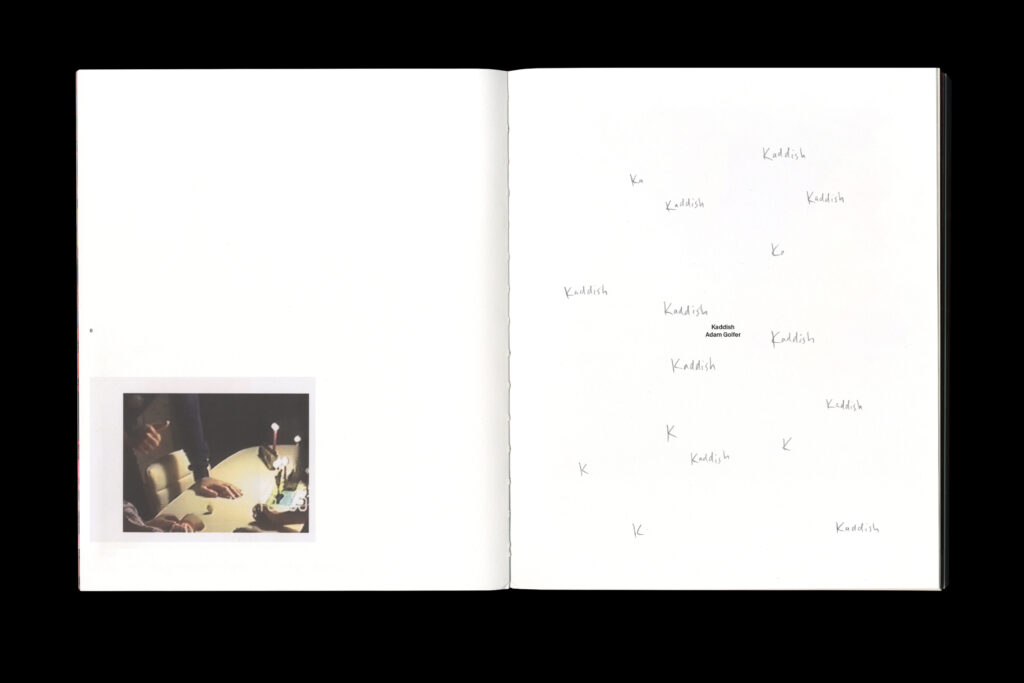
A lot of my personal work deals with memory, history and loss. Intentional or not, a lot of what Hailu speaks about in the film resides in this same territory. I am interested in different histories and types of imagery rubbing up against each other. Often this tension creates new meanings. The book projects I make bring together many different ways of looking and are inseparable from the way I film things as a cameraperson. Nothing is too ugly or too pretty. The combination is what generates meaning.

Let’s talk about editing It is a Soul… Did you have a script? How did you find the story?
Lorena: We didn’t have a script, but we did have loose ideas of themes and feelings we wanted to convey. We did an interview with Hailu and with that we created a storyline. But the visuals were really what drove the narrative. To me Hailu’s music is very dreamy and nostalgic, and I wanted to convey that in the edit. The process itself was very intuitive, I constructed “scenes” with the footage that gave me an emotional reaction.

How long was the post-production process for this film?
Lorena: The post-production was a little over a year. It took us quite a while to find the film’s voice, because although we had beautiful images and amazing music, we initially weren’t able to connect all the puzzle pieces in a cohesive way. For a while, the film always felt unfinished. But because we had the benefit of having a lot of time on our hands, because there was no budget and we got caught by the pandemic, we really delved deep into playing around with the footage until we found our voice.
It is a Soul… was a passion project, What kind of projects are your passion projects currently?
Adam: I’m finishing work on a featurette that I’ve been filming, very slowly, along the Texas/Mexico border for the past 5-6 years. The project is an essay film about the manmade development (and wall construction) in the Rio Grande Valley, and it’s effects on the ecology and natural environment along the border. It looks at who is allowed to be where, and who gets to decide.
Lorena: I just finished my first feature film, Los capítulos perdidos, which is a docu-fiction hybrid starring my family members playing fictionalized versions of themselves. It’s about memory and the search for a lost book in Caracas. It’s screening in Locarno in a couple weeks!
Last question, what are some movies you’ve been watching recently? Or is there any movie you’d like to recommend?
Adam: I saw Annie Baker’s new film Janet Planet, and I loved it. I’m also going to see Les Blank’s Burden of Dreams in a movie theater for the first time tonight. One of my favorites.
Lorena: I recently watched Hitchcock’s Suspicion in the Barcelona Filmotheque and it was so fun to watch on the big screen!
Now streaming on BFC Channel
It is a Soul: A Portrait of Hailu Mergia
Documentary short film | 14 min
This interview was originally published in the BFC Newsletter. Subscribe to get updates with more interviews.
Copyright © 2024 Brooklyn Filmmakers Collective. All rights reserved.


